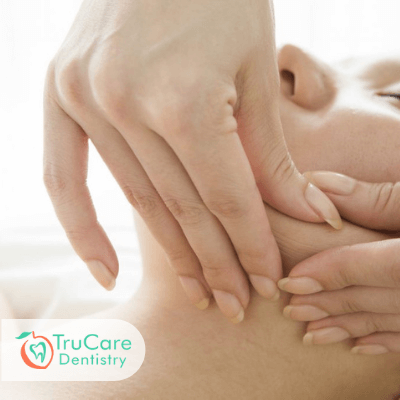
Skull is connected to the jawbone by temporomandibular joints, and there can be several problems when there is any stress on these muscles. TMJ disorder can be formidable; it causes jaw pain and headaches. TMJ disorder treatment is one of the best solutions for TMJ disorders, and it can be done by following prescribed TMJ therapy.
Symptom and sign of TMJ
Pain in the jawbone, muscle pain, and headaches are the most common sign of TMJ disorder. Also, TMJ patients quite often feel stressed.
How professionals Diagnosis TMJ
People often feel pain when they wake up; some feel pain and headaches at any time. They feel clenches during sleep. Consulting with the dentist and identifying the cause is the best step to tackle such problems. Patients should undergo proper diagnosis for Temporomandibular Joint Therapy.
TMJ disorder treatment
The type of Temporomandibular Joint Therapy can be chosen by correctly identifying the cause. This disorder can be treated using a mouthguard at night to keep the teeth from clenching. In minor and intermittent cases of TMJ disorder, counter pain medication can be helpful. Extensive Temporomandibular Joint Therapy is needed for extreme cases.
Management of stress and Temporomandibular Joint Therapy
One should practice stress management, and there are several stress relieving methods added in Temporomandibular Joint Therapy. Stress and anxiety are the two major causes of underline TMJ disorder. The third part of the therapy is to learn how to reduce stress and relax; peacefulness is also a significant factor in TMJ disorder treatment. Other causes help a dentist identify the disorder. This treatment is effective in reducing stress and anxiety.
Once the dentist identifies that you are a candidate for dental implants, inserting the tooth’s new ‘root’ into the jawbone becomes the first significant step. Dentists must have the experience and advanced training needed to perform the surgical process.
Mother nature works well once the implant is safely seated. Throughout the osseointegration process, natural oral tissue and bone gradually surround the biocompatible implant and bond with it. It creates a stable and enduring foundation for the restoration.
Natural tooth loss occurs because of Jawbone deterioration, which is a severe consequence. Seldom patients waiting to pursue the implant replacement find that their mouth no longer has the healthy bone density needed to support them.
TMJ disorder treatment and home remedies
Once your dentist confirms that you are a candidate for a dental implant, it is necessary to start the home treatment at once. Home remedies help in stress reduction and relaxation techniques. Home remedies tend to provide some relief in this disorder. Few of the highly effective home treatments include:
- Putting ice or cold packs to the joint area
- Steer clear of chewing gum and eating soft foods
- Stress management and relaxation techniques
- Gentle self-stretching of the jaw and neck muscles
Over-the-counter (OTC) nonsteroidal anti-inflammatory drugs (NSAIDs) such as ibuprofen (Advil, Motrin) or naproxen (Aleve), and other pain relievers, including aspirin (Ecotrin) and acetaminophen (Tylenol) can also be used to treat TMJ.
Risk factors associated with TMJ
It is vital to consult the dentist to confirm whether you are the right candidate for a dental implant or not.
For TMJ disorder, treatment surgery or medical treatment option becomes necessary if home remedies are not effective in all cases. Still, it provides temporary and even long-term relief from the pain symptoms.
The following are the most common TMJ disorder treatments
- Place a dental appliance (a dental splint), occlusal splint or stabilization splint, or bite guard into the mouth that prevents tooth grinding and keeps the teeth in alignment.
- Medical professionals use Botox to relax the muscles of the jaw. However, the FDA has not approved it yet.
- Jaw exercises with physical therapy help strengthen muscles, improve flexibility, and range of motion.
- A physician may prescribe medical marijuana with severe TMJ pain.
- Biobehavioral management (biofeedback, cognitive-behavioral therapy) helps to eliminate pain intensity.
- Acupuncture can be helpful to trigger point sometimes
- In severe cases, there is a pressing need for surgery on the jaw.
- TMJ arthroscopy or arthrocentesis is a minimally invasive procedure usually done in an outpatient setting.
- Total joint replacement becomes necessary sometimes. It generally requires a stay in the hospital for some days. Surgery recovery time is four to six weeks.
The following prescription medicines can be used to treat TMJ:
- Muscle relaxants: metaxalone, cyclobenzaprine
- Anti-inflammatory drugs: nabumetone, meloxicam, celecoxib
- Steroid injection: beclomethasone (Qvar)
- Benzodiazepines: diazepam (valium), clonazepam
- Sleep medications: doxepin (silenor)
Final words
One should consult a dentist and confirm whether he/she requires surgery. Home remedies are effective and provide long-term relief and play a key role in TMJ disorder treatment. Stress management exercises are necessary, and in extreme cases, one should take medication and consult the specialist to get quick relief.
